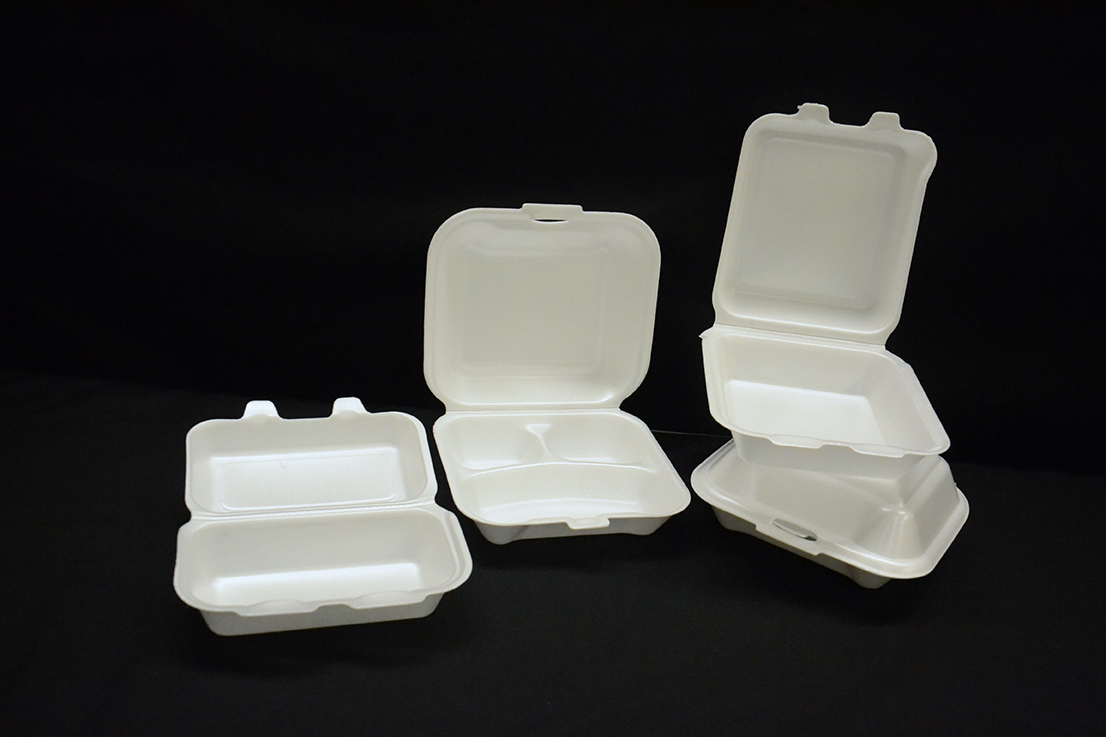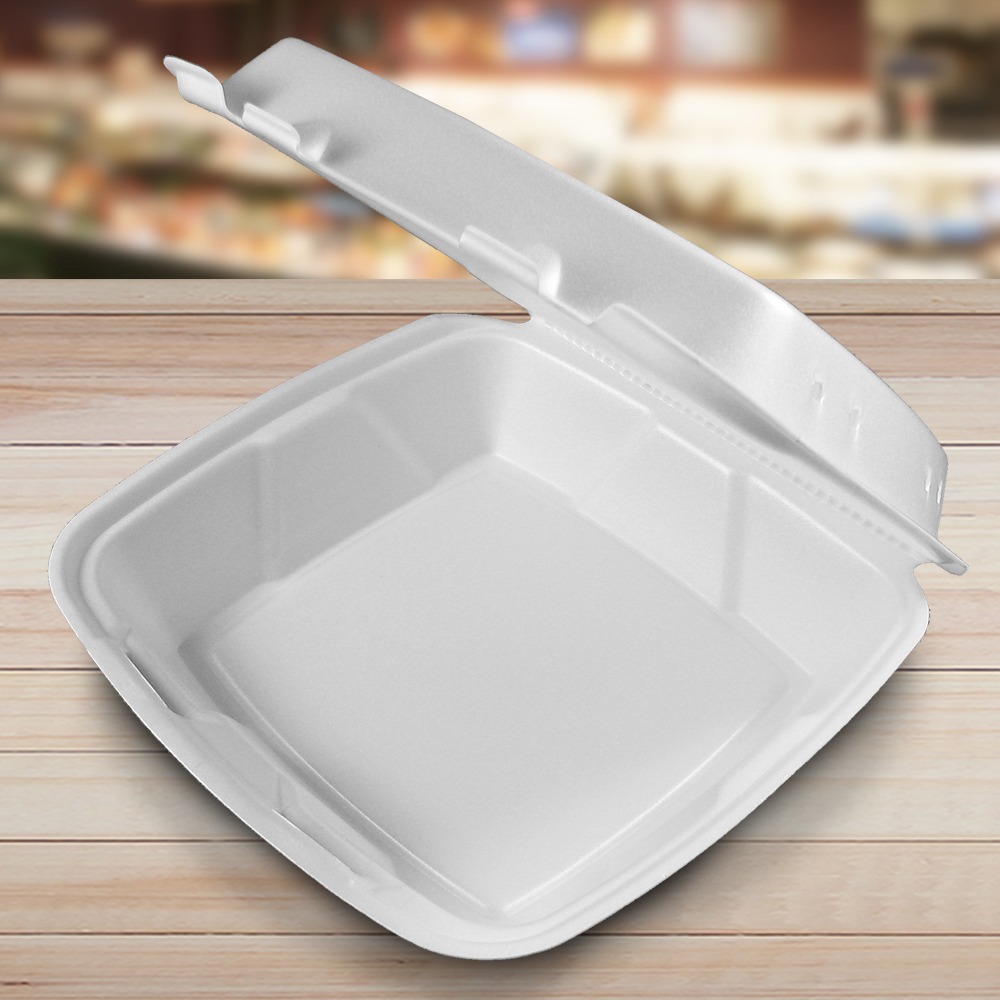Styrofoam meals containers, a ubiquitous presence in our day by day lives, have come below scrutiny for his or her environmental and well being implications. Delve into this complete exploration of the issues surrounding styrofoam, its potential dangers, and the promising options out there.
From landfills to marine ecosystems, the environmental impression of styrofoam is plain. Well being issues, together with the potential leaching of styrene into meals and drinks, increase additional questions on its security. Nonetheless, modern options provide hope for a extra sustainable future.
Environmental Affect
The environmental issues related to styrofoam meals containers stem from their sluggish decomposition price and the dangerous results they’ve on ecosystems.
Styrofoam, often known as polystyrene, is an artificial materials that’s immune to degradation. It might probably take a whole bunch of years to interrupt down, accumulating in landfills and polluting the atmosphere.
Affect on Landfills
- Styrofoam’s sluggish decomposition price contributes to landfill overcrowding and the depletion of invaluable landfill house.
- Its light-weight nature makes it simply transported by wind, leading to litter and unpleasant landscapes.
Affect on Marine Ecosystems
- Styrofoam usually results in waterways and oceans, the place it may be ingested by marine life, inflicting hurt and even dying.
- Its light-weight and buoyant nature permits it to drift on water, posing a navigation hazard for boats and ships.
- Styrofoam fragments can accumulate in marine meals chains, doubtlessly resulting in the switch of dangerous chemical compounds to people.
Well being Considerations
Styrofoam meals containers pose potential well being dangers because of their chemical composition and the potential for styrene leaching into meals and drinks. Understanding these dangers is essential for knowledgeable decision-making.
Styrofoam, often known as polystyrene, is an artificial polymer composed primarily of styrene monomer models. Styrene has been categorised as a doable human carcinogen by the Worldwide Company for Analysis on Most cancers (IARC), elevating issues about its potential well being results.
Styrene Leaching
One of many main well being issues with styrofoam meals containers is the potential for styrene to leach into meals and drinks. Styrene can migrate from the container into the contents, particularly when uncovered to warmth or acidic substances. Research have proven that styrene ranges in meals and drinks saved in styrofoam containers can exceed security limits.
Consuming styrene-contaminated meals or drinks has been linked to a variety of well being points, together with:
- Neurological results: Styrene can have an effect on the central nervous system, inflicting complications, dizziness, and fatigue.
- Reproductive toxicity: Styrene has been related to reproductive issues in each animals and people.
- Developmental toxicity: Styrene publicity throughout being pregnant could result in developmental abnormalities within the fetus.
- Most cancers danger: Styrene is assessed as a doable human carcinogen, and long-term publicity could improve the chance of sure varieties of most cancers.
Alternate options to Styrofoam

Styrofoam has a number of detrimental results on the atmosphere and human well being. In consequence, there’s a rising want for sustainable options to styrofoam meals containers. These options provide a number of environmental and well being advantages and current challenges and alternatives in transitioning to a extra sustainable future.
Plant-Based mostly Supplies
Plant-based supplies, comparable to bamboo, sugarcane, and corn starch, are biodegradable and compostable, decreasing waste accumulation in landfills and oceans. In addition they have a decrease carbon footprint throughout manufacturing in comparison with styrofoam. Nonetheless, plant-based containers is probably not as sturdy or heat-resistant as styrofoam, and their availability and value can differ relying on the area.
Recyclable Plastics
Recyclable plastics, comparable to polyethylene terephthalate (PET) and polypropylene (PP), might be reused and recycled a number of instances, decreasing plastic waste. They’re additionally light-weight and sturdy, making them appropriate for meals packaging. Nonetheless, the recycling course of might be energy-intensive, and the provision of recycling services can differ.
Edible Supplies, Styrofoam meals containers
Edible supplies, comparable to seaweed and plant leaves, can be utilized to create meals containers which are completely consumed with the meals. This eliminates waste and gives further dietary worth. Nonetheless, edible containers is probably not appropriate for every type of meals and should have a shorter shelf life.
Challenges and Alternatives
Transitioning to sustainable options to styrofoam presents each challenges and alternatives. Challenges embrace the upper price of some options, the necessity for client training and acceptance, and the event of infrastructure for recycling and composting. Alternatives embrace the potential for job creation within the sustainable packaging trade, the discount of environmental air pollution, and the promotion of a extra round economic system.By
addressing these challenges and embracing the alternatives, we will create a extra sustainable future the place meals containers are environmentally pleasant and pose no risk to human well being.
Rules and Bans

Governments worldwide have carried out laws and bans on styrofoam meals containers to handle environmental and well being issues. These measures intention to cut back the unfavourable impacts of styrofoam on ecosystems and human well-being.
Bans on styrofoam meals containers have been enacted in a number of international locations, together with the UK, France, and Canada. In america, some cities and states have carried out bans or restrictions on the usage of styrofoam meals containers. As an illustration, San Francisco turned the primary main U.S.
metropolis to ban styrofoam meals containers in 2016.
Motivations Behind Rules and Bans
The first motivations behind laws and bans on styrofoam meals containers are environmental and well being issues. Styrofoam, a sort of expanded polystyrene (EPS), is a non-biodegradable materials that may persist within the atmosphere for a whole bunch of years. It might probably fragment into small items, often called microplastics, which might be ingested by marine life and doubtlessly accumulate within the meals chain.
Styrofoam meals containers additionally pose well being issues. They’ll leach chemical compounds, comparable to styrene, into meals and drinks. Styrene has been linked to a variety of well being points, together with reproductive issues, developmental problems, and most cancers.
Effectiveness of Rules and Bans
Rules and bans on styrofoam meals containers have been efficient in decreasing the usage of this materials. For instance, after the ban in San Francisco, the usage of styrofoam meals containers decreased by 80% inside the first 12 months.
Nonetheless, the effectiveness of bans can differ relying on the enforcement mechanisms and the provision of options. Some companies have discovered methods to avoid bans through the use of different supplies that aren’t as environmentally pleasant as supposed.
Challenges and Controversies
Rules and bans on styrofoam meals containers have confronted some challenges and controversies. Some companies have argued that bans are too restrictive and may hurt their earnings. Others have expressed issues concerning the environmental impacts of different supplies, comparable to paper and compostable plastics.
There have additionally been issues concerning the potential for unintended penalties of bans. For instance, some argue that bans on styrofoam meals containers might result in elevated use of different single-use plastics, which can have their very own environmental and well being impacts.
Business Views

Using styrofoam meals containers has sparked various views amongst trade stakeholders. Producers, meals service suppliers, and environmental organizations maintain distinct views on the advantages, dangers, and options to styrofoam.
Producers
- Comfort and Price-effectiveness:Styrofoam is light-weight, cheap, and gives good insulation, making it a handy and cost-effective packaging choice for meals.
- Product Safety:Styrofoam’s inflexible construction protects meals from injury throughout transportation and dealing with.
- Recyclability:Some producers emphasize the recyclability of styrofoam, though its recycling infrastructure is restricted in lots of areas.
Meals Service Suppliers
- Buyer Comfort:Styrofoam containers are sometimes used for takeout and supply, offering comfort to prospects.
- Price Issues:Styrofoam’s low price makes it a sexy choice for meals service suppliers, particularly for single-use functions.
- Sustainability Considerations:Some meals service suppliers are going through stress from shoppers and environmental teams to cut back their use of styrofoam.
Environmental Organizations
- Environmental Affect:Styrofoam is non-biodegradable and may take a whole bunch of years to decompose, contributing to landfills and marine air pollution.
- Well being Considerations:Styrofoam comprises chemical compounds that may leach into meals and pose potential well being dangers, significantly when heated.
- Alternate options:Environmental organizations advocate for sustainable options to styrofoam, comparable to paper, cardboard, or compostable supplies.
Shopper Consciousness and Conduct
Shopper consciousness of the environmental and well being issues related to styrofoam meals containers has been rising lately, pushed by elevated media protection and public campaigns. Nonetheless, there may be nonetheless a major hole in understanding amongst shoppers, significantly concerning the long-term results of styrofoam waste and the potential well being dangers related to publicity to styrene.
Elements Influencing Shopper Conduct
A number of components affect client conduct and preferences concerning styrofoam meals containers, together with:
- Comfort:Styrofoam containers are light-weight, disposable, and handy for on-the-go eating and takeout.
- Price:Styrofoam is a comparatively cheap materials, making it a cheap choice for foodservice companies.
- Availability:Styrofoam containers are extensively out there at quick meals eating places, grocery shops, and different meals shops.
- Lack of knowledge:Many shoppers are unaware of the environmental and well being issues related to styrofoam and should not notice the potential penalties of their selections.
Methods to Improve Shopper Consciousness
To extend client consciousness and promote sustainable selections, a number of methods might be employed:
- Public training campaigns:Governments and non-profit organizations can launch public consciousness campaigns to coach shoppers concerning the environmental and well being impacts of styrofoam.
- Media protection:The media can play a major position in elevating consciousness by reporting on the most recent analysis and highlighting the implications of styrofoam use.
- Product labeling:Foodservice companies can implement product labeling to tell shoppers concerning the environmental and well being issues related to styrofoam.
- Incentives and rewards:Companies can provide incentives or rewards to prospects who select sustainable options to styrofoam.
Normal Inquiries: Styrofoam Meals Containers
What are the primary environmental issues related to styrofoam meals containers?
Styrofoam’s sluggish decomposition price and its accumulation in landfills and marine environments pose vital environmental threats.
Are there any well being dangers related to utilizing styrofoam meals containers?
Styrene, a chemical element of styrofoam, has been linked to potential well being issues, together with developmental and reproductive points.
What are some sustainable options to styrofoam meals containers?
Biodegradable and compostable supplies, comparable to plant-based plastics and paperboard, provide eco-friendly options to styrofoam.

